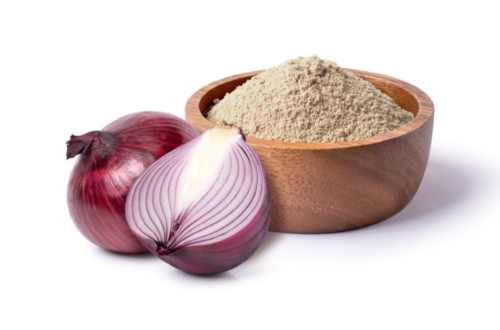Turkish cuisine is a rich and diverse culinary tradition that reflects the country’s cultural history and geographic diversity. Stretching across two continents, Turkey has absorbed flavors from the Mediterranean, the Middle East, Central Asia, and even Europe. From fragrant spices to unique preparations, Turkish foods have become beloved around the world. Whether you’re exploring street food in Istanbul or enjoying a home-cooked meal in a rural village, you’ll experience a symphony of flavors and textures. This blog explores some of the best traditional dishes that define authentic Turkish foods.
1. Meze: A Perfect Introduction to Turkish Foods
Before delving into hearty main courses, Turkish meals often begin with meze, a collection of small appetizer dishes. Meze can be hot or cold and include a variety of ingredients such as vegetables, seafood, yogurt, and spices. Some popular meze dishes include:
- Hummus: A creamy dip made from mashed chickpeas, tahini, olive oil, lemon juice, and garlic.
- Ezme: A spicy tomato and pepper salad with fresh herbs.
- Baba Ghanoush: A smoky, roasted eggplant dip.
- Haydari: A thick, garlicky yogurt dip with fresh herbs.
These dishes are usually accompanied by pide (Turkish flatbread) and are a fantastic way to start your culinary journey into Turkish foods.
2. Döner and Kebabs: The Iconic Meat Dishes of Turkey
When talking about Turkish foods, the first thing that often comes to mind is döner and kebabs. Turkish cuisine offers a wide variety of kebabs, each region bringing its own interpretation and cooking method. Two of the most famous are:
- Döner Kebab: Thin slices of marinated meat, typically lamb, beef, or chicken, slowly roasted on a vertical rotisserie. This dish can be served in various forms: in a wrap, sandwich, or on a plate with rice.
- Shish Kebab: Grilled chunks of meat (usually lamb or chicken) on skewers, seasoned with a blend of spices and herbs.
Other regional varieties include Adana Kebab (spicy minced meat) and Iskender Kebab, which is served with yogurt and tomato sauce on pieces of bread. The flavor of Turkish kebabs is deepened by the use of spices like sumac, cumin, and red pepper flakes, giving each bite a burst of richness and warmth.
3. Köfte: The Comforting Turkish Meatballs
Another classic element of Turkish foods is köfte, which are meatballs made from ground lamb or beef, mixed with herbs, onions, and spices. These juicy, flavorful meatballs are shaped into patties, balls, or ovals and can be grilled, fried, or baked. One of the popular varieties is İnegöl Köfte, a regional specialty from the town of İnegöl, which uses minimal seasoning, allowing the meat’s natural flavors to shine.
Köfte can be served on their own, with rice or salad, or even in a sandwich with fresh vegetables and herbs. They’re a staple in Turkish households and street food stalls alike.
4. Pide: The Turkish Pizza
Often referred to as “Turkish pizza,” pide is a beloved traditional food in Turkey. Pide is an oblong-shaped flatbread, topped with various fillings such as cheese, minced meat, vegetables, or even an egg cracked on top. It’s baked until the dough is golden and crispy, with the fillings bubbling in the center. Karadeniz Pide, a variety from the Black Sea region, is especially popular for its fluffy, thick crust and rich toppings.
Pide is typically enjoyed as a quick meal, especially for lunch, and can be found in most bakeries and restaurants across Turkey. Whether you prefer it simple with cheese or loaded with meat and vegetables, pide is a must-try Turkish food.
5. Lahmacun: The Turkish Flatbread
Another pizza-like dish, but distinctly Turkish, is lahmacun. This thin, crispy flatbread is topped with minced meat (often lamb or beef), tomatoes, onions, and herbs like parsley and red pepper flakes. It’s usually served with a side of fresh salad, lemon wedges, and sometimes pickles, allowing diners to roll it up like a wrap.
Lahmacun is a popular street food and is especially common in the southeastern parts of Turkey. It’s lighter than pide but packs a punch with its flavor-packed toppings.
6. Dolma and Sarma: Stuffed Vegetables and Grape Leaves
Dolma refers to vegetables stuffed with rice, herbs, and sometimes minced meat. Common vegetables used for dolma include bell peppers, tomatoes, zucchini, and eggplant. The filling is often seasoned with spices like cinnamon and allspice, creating a beautifully aromatic dish.
Sarma, on the other hand, refers to grape leaves wrapped around a similar filling of rice, herbs, and sometimes ground meat. These bite-sized rolls are a staple in Turkish meals and are often served with a side of yogurt.
Both dolma and sarma are labor-intensive dishes, often prepared for special occasions or family gatherings. They reflect the warmth and hospitality of Turkish culture, as they are often shared and savored in the company of loved ones.
7. Manti: Turkish Dumplings
For those who love dumplings, manti is a Turkish version that you must try. These tiny parcels of dough are filled with spiced minced meat (usually lamb or beef) and then boiled or steamed. They are served topped with a generous dollop of garlicky yogurt and drizzled with melted butter mixed with red pepper flakes and mint.
Manti are delicate and flavorful, often made from scratch in Turkish homes. While the preparation can be time-consuming, the result is a comforting and hearty dish that is deeply satisfying.
8. Börek: Flaky Pastry Goodness
Börek is a flaky, layered pastry that comes in various shapes and fillings. The most common version is made with yufka, a thin dough similar to phyllo. Börek can be stuffed with cheese, spinach, minced meat, or potatoes and then baked or fried to perfection.
One popular variety is sigara böreği, which are cigar-shaped pastries filled with cheese or minced meat and fried until golden and crispy. Börek is often enjoyed as a snack or part of a traditional Turkish breakfast.
9. Turkish Breakfast: A Feast for the Senses
Speaking of breakfast, kahvaltı (Turkish breakfast) is a significant part of Turkish food culture. It’s not just a meal; it’s an experience. A traditional Turkish breakfast consists of a wide array of small dishes, including:
- Simit: A sesame-crusted bread similar to a bagel.
- Menemen: Scrambled eggs cooked with tomatoes, peppers, and spices.
- Sucuk: A spicy Turkish sausage.
- Beyaz Peynir: A soft, salty white cheese.
- Olives, jams, honey, and clotted cream (kaymak).
Accompanied by freshly brewed Turkish tea, a Turkish breakfast is leisurely and indulgent, often shared with family and friends.
10. Baklava: The Sweet Ending to Turkish Meals
No exploration of Turkish foods is complete without mentioning baklava, one of Turkey’s most famous desserts. This decadent pastry consists of layers of thin, flaky dough (phyllo), filled with chopped nuts (usually pistachios or walnuts) and sweetened with syrup or honey.
Baklava is rich and sweet, making it the perfect treat to end a meal or enjoy with a cup of Turkish coffee. Variations of baklava can be found across the Middle East and the Mediterranean, but Turkey is particularly renowned for its masterful preparation of this dessert.
Conclusion
Turkish cuisine offers an incredible array of flavors, textures, and experiences. From savory kebabs and rich stews to delicate pastries and sweet desserts, Turkish foods celebrate fresh ingredients and bold flavors. Whether you’re sampling street food or dining in a traditional restaurant, every dish tells a story of Turkey’s history and culture. If you’re ever in Turkey or a Turkish restaurant, don’t miss out on these delicious traditional dishes that define authentic Turkish cuisine.





